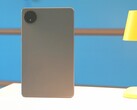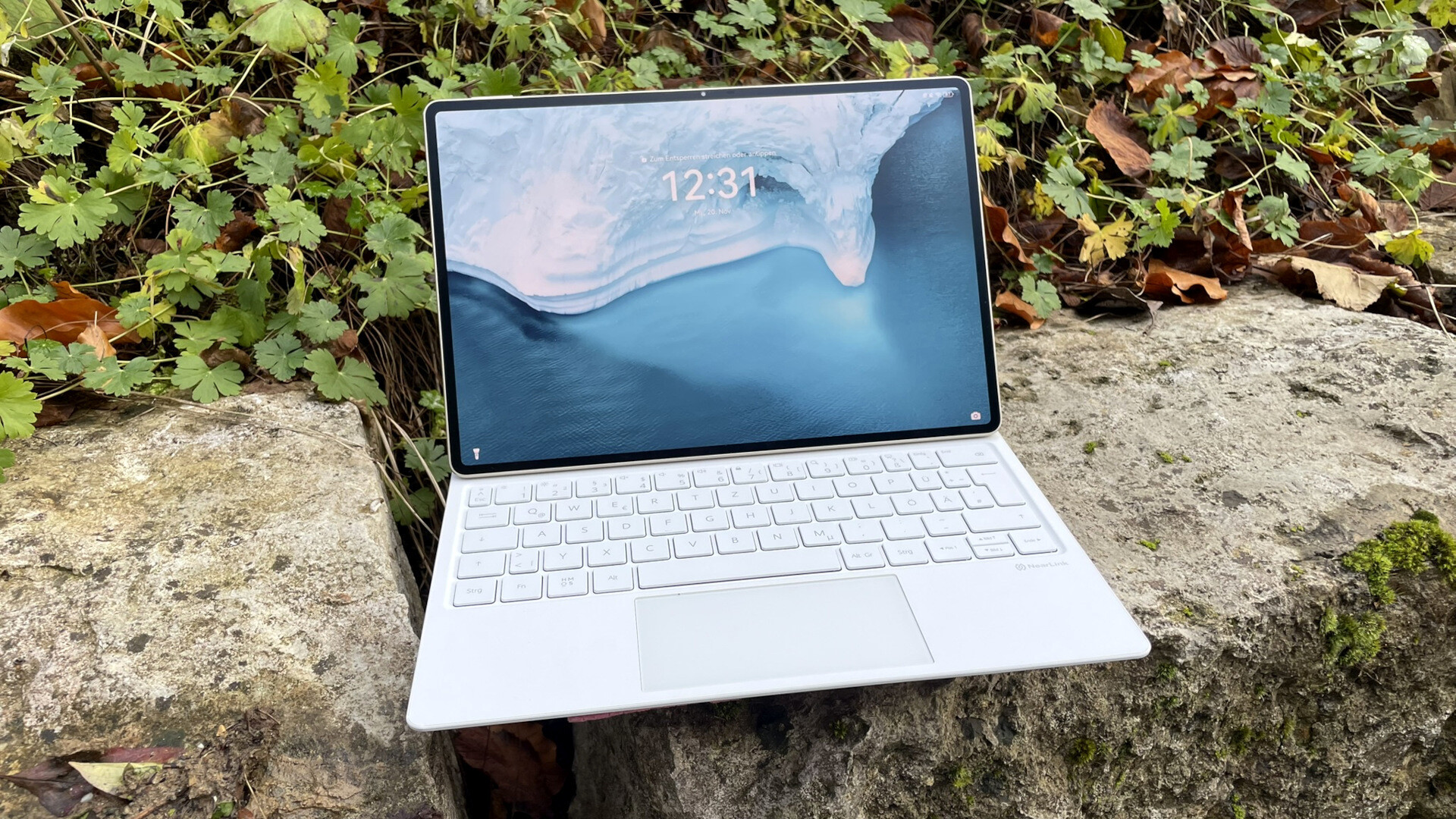
Huawei MatePad Pro 12.2 (2024) review - The 12.2-inch tablet with a matte display and powerful features
Twice the price at Apple.
An anti-reflective display with a 2000-nit brightness, a 144-Hz refresh rate and a docking keyboard included for free: These features make the Huawei MatePad Pro 12.2 very unpopular with the competition. Buyers, on the other hand, can get excited because the 12.2-inch tablet is comparatively inexpensive despite its extensive features. However, there are a few disadvantages—keywords being Google Play Store.Manuel Masiero, 👁 Daniel Schmidt (translated by Daisy Dickson) Published 🇩🇪 🇫🇷 ...
Verdict - Strong performance at a fair price
Huawei's MatePad Pro 12.2 is a powerful tablet. The PaperMatte edition boasts an impressive matte 144-Hz display that allows almost no annoying reflections. Thanks to its tandem OLED display, it also achieves peak brightness levels of over 2000 cd/m², making it one of the brightest tablets you can currently get.
Despite its 12.2-inch size, the superbly crafted MatePad Pro 12.2 is very light, weighing only 512 grams—plus, it is one of the thinnest tablets in its class with a build height of 5.5 millimeters. Conveniently, a docking keyboard is included with the device itself, which has a touchpad and feels nice to type on. Furthermore, it is very intuitive to write and draw on its matte display using the optional M-Pencil.
Unfortunately, there are also a few negative aspects to the tablet. The MatePad Pro 12.2 only uses a mid-range SoC, which is significantly less powerful than similarly priced tablets. In addition, its update supply remains unclear, there is no cellular option and all Google apps are missing straight out of the box. However, these can be installed later on via the Aurora App Store.
Pros
Cons
Price and availability
In the United States, the Huawei MatePad Pro 12.2 isn't available to purchase directly from the manufacturer, however, you can order it from retailers such as AliExpress, where it is currently on offer for a reduced price of $670.53.
Possible alternatives compared
Image | Model / Review | Geizhals | Weight | Drive | Display |
|---|---|---|---|---|---|
| Huawei MatePad Pro 12.2 2024 HiSilicon Kirin 9000W ⎘ HiSilicon Maleoon 910 ⎘ 12 GB Memory, 512 GB | 512 g | 512 GB UFS 3.1 Flash | 12.20" 2800x1840 274 PPI OLED | ||
| Honor MagicPad 2 Qualcomm Snapdragon 8s Gen 3 ⎘ Qualcomm Adreno 735 ⎘ 12 GB Memory, 256 GB | 555 g | 256 GB UFS 3.1 Flash | 12.30" 3000x1920 290 PPI OLED | ||
| OnePlus Pad 2 Qualcomm Snapdragon 8 Gen 3 ⎘ Qualcomm Adreno 750 ⎘ 12 GB Memory, 256 GB | 584 g | 256 GB UFS 3.1 Flash | 12.10" 3000x2120 304 PPI IPS | ||
| Samsung Galaxy Tab S10+ MediaTek Dimensity 9300+ ⎘ ARM Immortalis-G720 MP12 ⎘ 12 GB Memory, 256 GB | 571 g | 256 GB UFS 4.0 Flash | 12.40" 2800x1752 266 PPI Dynamic AMOLED 2X | ||
| Xiaomi Pad 6S Pro Qualcomm Snapdragon 8 Gen 2 ⎘ Qualcomm Adreno 740 ⎘ 8 GB Memory, 256 GB | Listenpreis 700€ | 590 g | 256 GB UFS 4.0 Flash | 12.40" 3048x2032 294 PPI IPS |
Table of Contents
- Verdict - Strong performance at a fair price
- Specifications
- Case - Lightweight, slim and made out of metal
- Connectivity - Only one storage variant of the MatePad Pro 12.2
- Software - Tricks to access the Google Play Store
- Communication and GNSS - Good GPS, but no 6 GHz WLAN and no cellular connection
- Cameras - The Huawei MatePad Pro 12.2 with a 13-MP camera
- Accessories and warranty - Glide Keyboard included
- Input devices & operation - The Huawei tablet with a flexible kickstand
- Display - Shines as brightly as promised
- Performance - The Huawei MatePad Pro 12.2 only has a mid-range SoC
- Games - Smooth gaming is possible
- Emissions - Cool tablet at all times
- Battery life - The MatePad Pro 12.2 with good runtimes
- Notebookcheck total rating
Tablets and anti-glare displays are two things that don't normally go together. Nevertheless, it works on the Huawei MatePad Pro 12.2. The PaperMatte edition is a 12.2-inch tablet with a matte screen consisting of a bright OLED panel that, according to the manufacturer, should shine at a record-breaking 2000 cd/m². But that's not all the Huawei MatePad Pro 12.2 has to offer, as it also comes with input pen support and a refresh rate of up to 144 Hz. Its scope of delivery additionally includes the Glide Keyboard, a docking keyboard with an integrated touchpad.
The Huawei MatePad Pro 12.2 is also attractive due to its price. At just over $1,000 for the only version available, which has 12 GB of RAM and 512 GB of storage, it is still quite a hefty sum to pay—but is fair considering its features. At the time of testing, the optional M-Pencil stylus is available for free if you buy the tablet directly from Huawei.
Specifications
Case - Lightweight, slim and made out of metal
Weighing in at 512 grams, the Huawei MatePad Pro 12.2 is currently one of the lightest 12.x-inch tablets on the market. At the same time, it boasts a super slim design, only being undercut by a few competitors with its thickness of just 5.5 millimeters. These include, for example, the Apple iPad Pro 13 (2024) with a thickness of 5.1 millimeters and the Samsung Galaxy Tab S10 Ultra's 5.4 millimeters.
The MatePad Pro 12.2's aluminum-magnesium alloy case is very sturdy despite its slim design and can hardly be twisted or dented even when applying a great deal of force. Our test device is the golden color variant, which looks great thanks to its metallic-matte surface made of fiberglass. It also has a silky feel and is hardly susceptible to fingerprints. Alternatively, Huawei also offers its tablet with a black back cover.
The MatePad Pro 12.2 has a very good display-to-surface ratio of 92 percent thanks to its slim bezels, which are only around 5 millimeters wide on all sides. Despite this, Huawei has still managed to integrate the selfie camera into the frame. The tablet's power button is also space-saving, as it additionally houses the fingerprint sensor. The optional stylus attaches magnetically to the top of the tablet and is also charged there.
Connectivity - Only one storage variant of the MatePad Pro 12.2
The MatePad Pro 12.2 is only available in one storage version, for which Huawei charges just over $1,000. Its 12 GB of RAM and 512 GB of storage make it pretty generously equipped. It barely even matters that you can't expand its internal storage via a microSD card.
The slim Huawei tablet has 4 speakers, two of which are located on its short sides. The MatePad Pro 12.2 has a solid range of features including WiFi 6, Bluetooth 5.2, DRM Widevine L1 for HD streaming and a fast USB 3.0 port. With our Samsung 980 Pro test SSD, the USB port achieved a data transfer rate of around 253 MB/s during the copying test. The tablet recognizes external data carriers even if they are formatted with the exFAT or NTFS file system.
The tablet can also be connected to a monitor via its USB port. However, you can do nothing more than mirror its desktop. The MatePad Pro 12.2 lacks refinements such as a desktop mode, which would have suited the display size well, as well as a version with cellular support.
Software - Tricks to access the Google Play Store
The tablet runs Huawei's in-house operating system HarmonyOS version 4.2, which is based on Android 12. Compared to standard Android, HarmonyOS comes with some practical extras, including the option to run apps in a window instead of full screen, resize them as desired and also place them anywhere on the desktop.
As Huawei is on Google's blacklist due to sanctions, the MatePad Pro 12.2 lacks all Google Mobile Services (GMS) including the Google Play Store. You can still install Google apps such as Chrome or YouTube, but you have to take a small detour to do so. This article shows how to do this.
We used one of the methods described in the article on our MatePad Pro 12.2, namely installing the Aurora Store via Huawei's AppGallery app store. The Aurora Store is an alternative to the Google Play Store, but uses the latter's databases for apps and downloads their APKs directly from there.
Huawei hasn't provided any information on how long the MatePad Pro 12.2 will receive updates. At the time of testing in mid-November, the Android security patches were up to date as of November 1.
Sustainability
Huawei hasn't published much information surrounding the subject of sustainability. The manufacturer hasn't provided any specific information on material extraction, but it emphasizes that it complies with all legal safety requirements in this regard. Huawei also offers a recycling program for electronic waste.
Huawei uses FSC-certified paper (Forest Stewardship Council) for the packaging of its products, thereby guaranteeing that the materials come from responsibly managed forests. The MatePad Pro 12.2's packaging features the FSC Mix logo. This means that it uses materials from FSC-certified forests and/or recycled materials as well as materials from controlled sources.
Communication and GNSS - Good GPS, but no 6 GHz WLAN and no cellular connection
The MatePad Pro 12.2's WiFi 6 module achieved solid and largely stable transfer rates using our Asus ROG Rapture GT-AXE11000 reference router, with peaks of just over 1000 MBit/s in the 5 GHz band.
However, almost all comparison devices managed even more. The Samsung Galaxy Tab S10+, the OnePlus Pad 2 and the Xiaomi Pad 6S Pro can also use the 6 GHz band and are capable of significantly higher data throughputs there.
The Huawei tablet supports the GPS, Glonass, BeiDou, Galileo and QZSS satellite navigation services in single-band mode. During our test, it located our current position relatively accurately, making it well suited for navigation tasks. On a 10-kilometer bike ride, it didn't locate us quite as precisely as the Garmin Venu 2 fitness smartwatch, but on the other hand, it didn't make any major mistakes and was at worst a few meters off the mark.
Cameras - The Huawei MatePad Pro 12.2 with a 13-MP camera
On the front, an 8-MP camera sits inconspicuously in the tablet's display frame and works using a fixed focus. Its image quality is okay and is easily sufficient for video chats. The selfie camera records videos in a maximum of 4K at 30 frames per second. Higher frame rates also aren't possible in the two lower resolutions 1080p and 720p.
In addition to an LED flash, the round camera module on the back cover houses the two main lenses: a 13 MP camera with an aperture of f/1.8 and an 8 MP ultra-wide-angle camera (f/2.2). Neither of them uses an optical image stabilizer.
The main camera takes solid pictures in good lighting conditions. Its image sharpness and level of detail are nowhere near as good as smartphones in the same price range. However, as the image comparison shows, it produces better results than some other 12.x-inch tablets. For example, neither the Honor MagicPad 2 nor the Samsung Galaxy Tab S10+ can hold a candle to the MatePad Pro 12.2 in terms of image quality.
In our test, on the other hand, the main camera's color balance delivered quite variable results. Depending on the subject, the photos sometimes look a little too cool, sometimes they're a touch too warm. Shots using digital zoom don't look too good and the camera is hardly usable in low light. Conversely, videos look good but are not optically stabilized. You can expect a maximum of 30fps at 4K, and up to 60fps at 1080p and 720p.
The ultra-wide-angle camera doesn't do a bad job, but its 8-MP sensor limits its shooting capabilities. However, it is completely suitable for taking photos of texts and documents.
Image comparison
Choose a scene and navigate within the first image. One click changes the position on touchscreens. One click on the zoomed-in image opens the original in a new window. The first image shows the scaled photograph of the test device.
Daylight photo 1Daylight photo 2Ultra-wide angle5x zoomLow-light photoUnder controlled lighting conditions, the main camera showed that it can capture colors precisely. With optimum lighting, there were only very slight deviations from the reference colors (max. Delta-E 11.86) and the test chart was reproduced in full. At 1 lux of residual light, however, the camera simply gave up, as both the test chart and the ColorChecker color chart then disappeared completely in the dark.


Accessories and warranty - Glide Keyboard included
Many other tablet manufacturers charge a lot for accessories such as a magnetic docking keyboard. In contrast, such a QWERTY keyboard, namely the Huawei Glide Keyboard, is included with the MatePad Pro 12.2.
Also included is a 100-watt power adapter, a polishing cloth, a USB cable (USB-A to USB-C) and information leaflets. At the time of writing, if you order the tablet directly from Huawei, you can add the 3rd generation Huawei M-Pencil to your shopping cart free of charge.
The Huawei MatePad Pro 12.2 is covered by a standard 12-month warranty.
Input devices & operation - The Huawei tablet with a flexible kickstand
The Huawei MatePad Pro 12.2 docks magnetically onto the 420-gram Glide Keyboard, which is made of soft plastic. Just like the Huawei M-Pencil, the keyboard and tablet are connected wirelessly via Huawei's Bluetooth alternative called NearLink. The special thing about this is that keyboard and touchpad inputs are recognized even when the tablet isn't physically connected to the Glide Keyboard. During our test, this still worked from a distance of several meters.
The docking keyboard is comfortable to use thanks to its large key travel. The same can be said about its nice and big touchpad, which works just like a "real" laptop touchpad thanks to its integrated buttons. As soon as you touch it, a mouse pointer appears on the tablet's screen. The touchpad supports multi-touch gestures, allowing you to zoom in on photos and drag app windows to a different position, for example.
The Glide Keyboard's kickstand allows the tablet to be positioned at different angles to the keyboard, all of which give it that classic laptop shape. The so-called studio shape is also supported. This involves pulling the tablet forward until it lies very flat above the keyboard. Because it maintains a slight angle, this set-up is particularly suitable for drawing.
According to the manufacturer, the 3rd generation M-Pencil supports up to 10,000 pressure levels and, for some apps, a pressure-sensitive handwriting function with 16,384 levels. The combination of the OLED panel's 144 Hz frame rate and its matte glass surface ensures excellent writing and drawing performance. If you write in search fields with the stylus, the tablet automatically converts the input into text.
The stylus fits into a specially designed recess above the keyboard unit. When the Glide Keyboard is closed, the stylus is enclosed and can't be accidentally lost during transportation.
The MatePad Pro 12.2 can be biometrically unlocked via the fingerprint sensor integrated into the power button, which works reliably and is also possible when the screen is switched off. 2D facial recognition via the selfie camera is also available, but this method is less secure.
Display - Shines as brightly as promised
One highlight of the MatePad Pro 12.2 is its OLED panel with a resolution of 2,800 x 1,840 pixels. This isn't just because it has a refresh rate of 144 Hz, which not many other tablets can do. Two other features make the 3:2 screen particularly special: a matte surface and high brightness, which the manufacturer claims is up to 2000 cd/m².
A special surface treatment, which adds nanometer-sized irregularities to the OLED panel, ensures that the screen surface diffusely reflects incoming light and therefore hardly shows reflections at all. Only Apple currently offers something similar on the iPad Pro—but charges considerably more for it. There, the matte option bears the name nano-textured glass, but can only be selected for the 1 TB and 2 TB variants, which means you'll pay around $2,000 for such an iPad Pro in the cheapest case.
There isn't just one OLED panel under the glass surface of the MatePad Pro 12.2, but two of them. This gives the tablet screen a brightness that many competitors can only dream of. When displaying a pure white background, the 3:2 display achieved an average of 1,003 cd/m² and increased to up to 2,284 cd/m² when we limited the measurement to a smaller image section (APL18). In HDR mode, its maximum brightness is even a little higher at 2,422 cd/m². The MatePad Pro 12.2 can therefore deliver impressive HDR effects.
The MatePad Pro 12.2 adjusts its display brightness with the help of pulse width modulation (PWM), which makes screen flickering unavoidable. However, at 360 Hz, the PWM frequency is quite high across all brightness levels we measured, so even sensitive users shouldn't be faced with any issues during use.
At the same time, the tablet additionally uses a nominal PWM dimming frequency of 2,880 Hz to further minimize the effects of PWM. We measured and found a dimming frequency of 2,777 Hz (measured at 36% screen brightness), which is very close to the manufacturer's specification.
| |||||||||||||||||||||||||
Brightness Distribution: 95 %
Center on Battery: 988 cd/m²
Contrast: ∞:1 (Black: 0 cd/m²)
ΔE ColorChecker Calman: 1.2 | ∀{0.5-29.43 Ø4.78}
ΔE Greyscale Calman: 2.1 | ∀{0.09-98 Ø5}
100% sRGB (Calman 2D)
Gamma: 2.22
CCT: 6882 K
| Huawei MatePad Pro 12.2 2024 OLED, 2800x1840, 12.2" | Honor MagicPad 2 OLED, 3000x1920, 12.3" | OnePlus Pad 2 IPS, 3000x2120, 12.1" | Samsung Galaxy Tab S10+ Dynamic AMOLED 2X, 2800x1752, 12.4" | Xiaomi Pad 6S Pro IPS, 3048x2032, 12.4" | |
|---|---|---|---|---|---|
| Screen | -6% | -34% | -68% | -45% | |
| Brightness middle (cd/m²) | 988 | 645 -35% | 833 -16% | 471 -52% | 867 -12% |
| Brightness (cd/m²) | 1003 | 650 -35% | 771 -23% | 473 -53% | 810 -19% |
| Brightness Distribution (%) | 95 | 94 -1% | 84 -12% | 97 2% | 87 -8% |
| Black Level * (cd/m²) | 0.45 | 0.58 | |||
| Colorchecker dE 2000 * | 1.2 | 1.3 -8% | 1.79 -49% | 3.1 -158% | 2 -67% |
| Colorchecker dE 2000 max. * | 2.5 | 2.1 16% | 4.01 -60% | 5.8 -132% | 5.5 -120% |
| Greyscale dE 2000 * | 2.1 | 1.5 29% | 3 -43% | 2.4 -14% | 3 -43% |
| Gamma | 2.22 99% | 2.25 98% | 2.254 98% | 2.06 107% | 2.29 96% |
| CCT | 6882 94% | 6658 98% | 6419 101% | 6746 96% | 6957 93% |
| Contrast (:1) | 1851 | 1495 |
* ... smaller is better
Screen Flickering / PWM (Pulse-Width Modulation)
| Screen flickering / PWM detected | 360 Hz Amplitude: 27.4 % Secondary Frequency: 2777 Hz | ||
The display backlight flickers at 360 Hz (worst case, e.g., utilizing PWM) . The frequency of 360 Hz is relatively high, so most users sensitive to PWM should not notice any flickering. However, there are reports that some users are still sensitive to PWM at 500 Hz and above, so be aware. In comparison: 53 % of all tested devices do not use PWM to dim the display. If PWM was detected, an average of 8108 (minimum: 5 - maximum: 343500) Hz was measured. | |||
Measurement series with fixed zoom level and different brightness settings (The amplitude curve at minimum brightness looks flat, but this is due to the scaling. The info box shows the enlarged version of the amplitude at minimum brightness).
The OLED panel's color depiction can be adjusted in the display settings using the two color profiles Normal or Vivid. The screen can also automatically adjust its color temperature to the ambient lighting conditions. The tablet delivers the best picture quality in Normal color mode. (Delta-E colors & grayscale each < 3).
Display Response Times
| ↔ Response Time Black to White | ||
|---|---|---|
| 0.93 ms ... rise ↗ and fall ↘ combined | ↗ 0.4635 ms rise | |
| ↘ 0.462 ms fall | ||
| The screen shows very fast response rates in our tests and should be very well suited for fast-paced gaming. In comparison, all tested devices range from 0.1 (minimum) to 240 (maximum) ms. » 3 % of all devices are better. This means that the measured response time is better than the average of all tested devices (20.2 ms). | ||
| ↔ Response Time 50% Grey to 80% Grey | ||
| 3.09 ms ... rise ↗ and fall ↘ combined | ↗ 1.429 ms rise | |
| ↘ 1.657 ms fall | ||
| The screen shows very fast response rates in our tests and should be very well suited for fast-paced gaming. In comparison, all tested devices range from 0.165 (minimum) to 636 (maximum) ms. » 12 % of all devices are better. This means that the measured response time is better than the average of all tested devices (31.6 ms). | ||
Outside, the MatePad Pro 12.2 is a force to be reckoned with, as its matte display makes it easy to read content even in very bright ambient light. Its viewing-angle stability is also great. Even when viewed from a wider angle, the image remains true to color and isn't darkened significantly.
Performance - The Huawei MatePad Pro 12.2 only has a mid-range SoC
Huawei seems to be keeping the SoC in the MatePad Pro 12.2 a secret. However, we used apps such as Aida64 and CPU-Z to determine that a 12-core processor runs under the hood. The benchmarks showed that the SoC performs largely the same as the HiSilicon Kirin 9000W, which also has 12 cores. The clock rates are slightly different in the MatePad Pro 12.2, but there are hardly any differences overall.
For its price range, the Huawei tablet doesn't offer a particularly high level of performance. Even so, it still delivers solid mid-range performance and thanks to its many cores, the processor performed particularly well in multi-core benchmarks.
HarmonyOS and the installed apps run super smoothly during everyday use. Nevertheless, competitors such as the Samsung Galaxy Tab S10+ and the Xiaomi Pad 6S Pro have significantly more performance reserves to fall back on.
| UL Procyon AI Inference for Android - Overall Score NNAPI | |
| Samsung Galaxy Tab S10+ | |
| Average of class Tablet (2597 - 76852, n=62, last 2 years) | |
| Xiaomi Pad 6S Pro | |
| Honor MagicPad 2 | |
| Huawei MatePad Pro 12.2 2024 | |
| Average HiSilicon Kirin 9000W (10373 - 11155, n=4) | |
| Geekbench AI | |
| Single Precision TensorFlow NNAPI 1.1 | |
| Samsung Galaxy Tab S10+ | |
| Honor MagicPad 2 | |
| Average of class Tablet (243 - 1243, n=8, last 2 years) | |
| Average HiSilicon Kirin 9000W (360 - 387, n=3) | |
| Huawei MatePad Pro 12.2 2024 | |
| OnePlus Pad 2 | |
| Half Precision TensorFlow NNAPI 1.1 | |
| Samsung Galaxy Tab S10+ | |
| Average of class Tablet (227 - 5204, n=8, last 2 years) | |
| Honor MagicPad 2 | |
| Average HiSilicon Kirin 9000W (364 - 388, n=3) | |
| Huawei MatePad Pro 12.2 2024 | |
| OnePlus Pad 2 | |
| Quantized TensorFlow NNAPI 1.1 | |
| Samsung Galaxy Tab S10+ | |
| Average of class Tablet (508 - 4998, n=8, last 2 years) | |
| Honor MagicPad 2 | |
| Average HiSilicon Kirin 9000W (727 - 837, n=3) | |
| Huawei MatePad Pro 12.2 2024 | |
| OnePlus Pad 2 | |
| AI Benchmark - Score V6 | |
| Average of class Tablet (70.4 - 17293, n=29, last 2 years) | |
| Huawei MatePad Pro 12.2 2024 | |
| Average HiSilicon Kirin 9000W (n=1) | |
The HiSilicon Maleoon 910 GPU is already a few years old and, like the SoC, doesn't exceed the mid-range level. As a result, the MatePad Pro 12.2 almost always landed at the back of the pack during the graphics benchmarks.
GFXBench (DX / GLBenchmark) 2.7: T-Rex Onscreen | 1920x1080 T-Rex Offscreen
GFXBench 3.0: on screen Manhattan Onscreen OGL | 1920x1080 1080p Manhattan Offscreen
GFXBench 3.1: on screen Manhattan ES 3.1 Onscreen | 1920x1080 Manhattan ES 3.1 Offscreen
GFXBench: on screen Car Chase Onscreen | 1920x1080 Car Chase Offscreen | on screen Aztec Ruins High Tier Onscreen | 2560x1440 Aztec Ruins High Tier Offscreen | on screen Aztec Ruins Normal Tier Onscreen | 1920x1080 Aztec Ruins Normal Tier Offscreen | 3840x2160 4K Aztec Ruins High Tier Offscreen
| 3DMark / Wild Life Extreme Unlimited | |
| Samsung Galaxy Tab S10+ | |
| OnePlus Pad 2 | |
| Honor MagicPad 2 | |
| Xiaomi Pad 6S Pro | |
| Huawei MatePad Pro 12.2 2024 | |
| 3DMark / Wild Life Extreme | |
| Samsung Galaxy Tab S10+ | |
| OnePlus Pad 2 | |
| Xiaomi Pad 6S Pro | |
| Honor MagicPad 2 | |
| Huawei MatePad Pro 12.2 2024 | |
| 3DMark / Wild Life Unlimited Score | |
| Samsung Galaxy Tab S10+ | |
| Honor MagicPad 2 | |
| Xiaomi Pad 6S Pro | |
| Huawei MatePad Pro 12.2 2024 | |
| 3DMark / Wild Life Score | |
| Huawei MatePad Pro 12.2 2024 | |
| Xiaomi Pad 6S Pro | |
| Honor MagicPad 2 | |
| 3DMark / Sling Shot Extreme (ES 3.1) Unlimited Physics | |
| Samsung Galaxy Tab S10+ | |
| OnePlus Pad 2 | |
| Honor MagicPad 2 | |
| Huawei MatePad Pro 12.2 2024 | |
| Xiaomi Pad 6S Pro | |
| 3DMark / Sling Shot Extreme (ES 3.1) Unlimited Graphics | |
| OnePlus Pad 2 | |
| Samsung Galaxy Tab S10+ | |
| Honor MagicPad 2 | |
| Xiaomi Pad 6S Pro | |
| Huawei MatePad Pro 12.2 2024 | |
| 3DMark / Sling Shot Extreme (ES 3.1) Unlimited | |
| OnePlus Pad 2 | |
| Samsung Galaxy Tab S10+ | |
| Honor MagicPad 2 | |
| Xiaomi Pad 6S Pro | |
| Huawei MatePad Pro 12.2 2024 | |
| GFXBench (DX / GLBenchmark) 2.7 / T-Rex Onscreen | |
| Xiaomi Pad 6S Pro | |
| Samsung Galaxy Tab S10+ | |
| Huawei MatePad Pro 12.2 2024 | |
| Honor MagicPad 2 | |
| GFXBench (DX / GLBenchmark) 2.7 / T-Rex Offscreen | |
| Samsung Galaxy Tab S10+ | |
| Honor MagicPad 2 | |
| Xiaomi Pad 6S Pro | |
| Huawei MatePad Pro 12.2 2024 | |
| GFXBench 3.0 / Manhattan Onscreen OGL | |
| Samsung Galaxy Tab S10+ | |
| Xiaomi Pad 6S Pro | |
| Huawei MatePad Pro 12.2 2024 | |
| Honor MagicPad 2 | |
| GFXBench 3.0 / 1080p Manhattan Offscreen | |
| Honor MagicPad 2 | |
| Samsung Galaxy Tab S10+ | |
| Xiaomi Pad 6S Pro | |
| Huawei MatePad Pro 12.2 2024 | |
| GFXBench 3.1 / Manhattan ES 3.1 Onscreen | |
| Samsung Galaxy Tab S10+ | |
| Xiaomi Pad 6S Pro | |
| Honor MagicPad 2 | |
| Huawei MatePad Pro 12.2 2024 | |
| GFXBench 3.1 / Manhattan ES 3.1 Offscreen | |
| Samsung Galaxy Tab S10+ | |
| Honor MagicPad 2 | |
| Xiaomi Pad 6S Pro | |
| Huawei MatePad Pro 12.2 2024 | |
| GFXBench / Car Chase Onscreen | |
| Samsung Galaxy Tab S10+ | |
| Xiaomi Pad 6S Pro | |
| Honor MagicPad 2 | |
| Huawei MatePad Pro 12.2 2024 | |
| GFXBench / Car Chase Offscreen | |
| Samsung Galaxy Tab S10+ | |
| Honor MagicPad 2 | |
| Xiaomi Pad 6S Pro | |
| Huawei MatePad Pro 12.2 2024 | |
| GFXBench / Aztec Ruins High Tier Onscreen | |
| Samsung Galaxy Tab S10+ | |
| OnePlus Pad 2 | |
| Xiaomi Pad 6S Pro | |
| Honor MagicPad 2 | |
| Huawei MatePad Pro 12.2 2024 | |
| GFXBench / Aztec Ruins High Tier Offscreen | |
| Samsung Galaxy Tab S10+ | |
| OnePlus Pad 2 | |
| Xiaomi Pad 6S Pro | |
| Honor MagicPad 2 | |
| Huawei MatePad Pro 12.2 2024 | |
| GFXBench / Aztec Ruins Normal Tier Onscreen | |
| Samsung Galaxy Tab S10+ | |
| Xiaomi Pad 6S Pro | |
| Honor MagicPad 2 | |
| OnePlus Pad 2 | |
| Huawei MatePad Pro 12.2 2024 | |
| GFXBench / Aztec Ruins Normal Tier Offscreen | |
| Samsung Galaxy Tab S10+ | |
| OnePlus Pad 2 | |
| Xiaomi Pad 6S Pro | |
| Honor MagicPad 2 | |
| Huawei MatePad Pro 12.2 2024 | |
| GFXBench / 4K Aztec Ruins High Tier Offscreen | |
| Samsung Galaxy Tab S10+ | |
| OnePlus Pad 2 | |
| Xiaomi Pad 6S Pro | |
| Honor MagicPad 2 | |
| Huawei MatePad Pro 12.2 2024 | |
The MatePad Pro 12.2 lets you surf the web quickly. In the browser benchmarks, however, Huawei's tablet behaved quite inconspicuously, as it neither achieved record results nor did it cross the finish line at the bottom.
| Jetstream 2 - 2.0 Total Score | |
| Samsung Galaxy Tab S10+ (Chrome 130) | |
| Xiaomi Pad 6S Pro (Chrome 125.0.6422.52) | |
| Huawei MatePad Pro 12.2 2024 (Chrome 130.0.6723.102) | |
| Average of class Tablet (22.3 - 395, n=68, last 2 years) | |
| Honor MagicPad 2 (Chrome 128.0.6613.146) | |
| Average HiSilicon Kirin 9000W (89.5 - 155.8, n=4) | |
| Speedometer 2.0 - Result 2.0 | |
| Samsung Galaxy Tab S10+ (Chrome 130) | |
| Xiaomi Pad 6S Pro (Chrome 125.0.6422.52) | |
| Huawei MatePad Pro 12.2 2024 (Chrome 130.0.6723.102) | |
| Average of class Tablet (2.59 - 790, n=55, last 2 years) | |
| Honor MagicPad 2 (Chrome 128.0.6613.146) | |
| Average HiSilicon Kirin 9000W (62.7 - 208, n=3) | |
| Speedometer 3 - Score 3.0 | |
| Samsung Galaxy Tab S10+ (Chrome 130) | |
| Average of class Tablet (1.25 - 49.1, n=64, last 2 years) | |
| Huawei MatePad Pro 12.2 2024 (Chrome 130.0.6723.102) | |
| Xiaomi Pad 6S Pro (Chrome 125.0.6422.52) | |
| Honor MagicPad 2 (Chrome 128.0.6613.146) | |
| Average HiSilicon Kirin 9000W (3.11 - 12.5, n=3) | |
| WebXPRT 4 - Overall | |
| Samsung Galaxy Tab S10+ (Chrome 130) | |
| Xiaomi Pad 6S Pro (Chrome 125.0.6422.52) | |
| Huawei MatePad Pro 12.2 2024 (Chrome 130.0.6723.102) | |
| Honor MagicPad 2 (Chrome 128.0.6613.146) | |
| Average of class Tablet (26 - 376, n=71, last 2 years) | |
| Average HiSilicon Kirin 9000W (85 - 160, n=4) | |
| Octane V2 - Total Score | |
| Samsung Galaxy Tab S10+ (Chrome 130) | |
| Xiaomi Pad 6S Pro (Chrome 125.0.6422.52) | |
| Huawei MatePad Pro 12.2 2024 (Chrome 130.0.6723.102) | |
| OnePlus Pad 2 (Chrome 128) | |
| Average of class Tablet (763 - 138481, n=95, last 2 years) | |
| Honor MagicPad 2 (Chrome 128.0.6613.146) | |
| Average HiSilicon Kirin 9000W (32134 - 46687, n=4) | |
| Mozilla Kraken 1.1 - Total | |
| Average of class Tablet (243 - 27101, n=80, last 2 years) | |
| Average HiSilicon Kirin 9000W (836 - 1244, n=4) | |
| Honor MagicPad 2 (Chrome 128.0.6613.146) | |
| Huawei MatePad Pro 12.2 2024 (Chrome 130.0.6723.102) | |
| Samsung Galaxy Tab S10+ (Chrome 130) | |
| Xiaomi Pad 6S Pro (Chrome 125.0.6422.52) | |
* ... smaller is better
The tablet's UFS 3.1 storage ensures short loading times and that apps launch quickly. The Samsung Galaxy Tab S10+ and the Xiaomi Pad 6S Pro are even faster, however.
| Huawei MatePad Pro 12.2 2024 | Honor MagicPad 2 | OnePlus Pad 2 | Samsung Galaxy Tab S10+ | Xiaomi Pad 6S Pro | Average 512 GB UFS 3.1 Flash | Average of class Tablet | |
|---|---|---|---|---|---|---|---|
| AndroBench 3-5 | 3% | -9% | -9% | 54% | -13% | -21% | |
| Sequential Read 256KB (MB/s) | 1925.89 | 2025.54 5% | 2003.1 4% | 3574.3 86% | 3465.72 80% | 1872 ? -3% | 1795 ? -7% |
| Sequential Write 256KB (MB/s) | 1461.8 | 2003.53 37% | 1732.7 19% | 554.67 -62% | 3154.3 116% | 1324 ? -9% | 1342 ? -8% |
| Random Read 4KB (MB/s) | 313.92 | 298.27 -5% | 236.5 -25% | 218.43 -30% | 381.97 22% | 288 ? -8% | 246 ? -22% |
| Random Write 4KB (MB/s) | 531.89 | 401.95 -24% | 348.6 -34% | 374.09 -30% | 510.95 -4% | 355 ? -33% | 280 ? -47% |
Games - Smooth gaming is possible
The MatePad Pro 12.2 may not have the fastest SoC, but current games still run smoothly on the tablet. We tested this with Genshin Impact and PUBG Mobile in different graphics settings.
Genshin Impact runs at an average of almost 49 frames per second using the maximum detail level, without stuttering or other delays. In the lowest graphics setting, we noted an almost constant 60 frames per second.
The frame rate progression in PUBG Mobile proved to be even smoother. Here, the tablet managed 60 frames per second in HD and Smooth mode and 40 frames per second in the maximum selectable UltraHDR/Ultra setting. It could deliver more FPS, but is slowed down by the game.
We measured the game frame rates using Gamebench.
Emissions - Cool tablet at all times
Temperature
The MatePad Pro 12.2 always remains cool during operation. Even during the extreme scenario, in which the tablet ran the burnout benchmark for an hour and was thus utilized to its maximum capacity, the surface temperatures only reached a maximum of just under 38 °C in the end. As the 3DMark stress tests showed, the tablet didn't lose its cool internally either, as it was able to deliver its maximum performance at practically all times.
(+) The maximum temperature on the upper side is 38.1 °C / 101 F, compared to the average of 33.7 °C / 93 F, ranging from 20.7 to 53.2 °C for the class Tablet.
(+) The bottom heats up to a maximum of 37.3 °C / 99 F, compared to the average of 33.2 °C / 92 F
(+) In idle usage, the average temperature for the upper side is 30.4 °C / 87 F, compared to the device average of 30 °C / 86 F.
3DMark Steel Nomad Stress Test
| 3DMark | |
| Wild Life Stress Test Stability | |
| Huawei MatePad Pro 12.2 2024 | |
| Xiaomi Pad 6S Pro | |
| OnePlus Pad 2 | |
| Honor MagicPad 2 | |
| Samsung Galaxy Tab S10+ | |
| Wild Life Extreme Stress Test | |
| Huawei MatePad Pro 12.2 2024 | |
| Xiaomi Pad 6S Pro | |
| Honor MagicPad 2 | |
| OnePlus Pad 2 | |
| Samsung Galaxy Tab S10+ | |
| Solar Bay Stress Test Stability | |
| Xiaomi Pad 6S Pro | |
| Honor MagicPad 2 | |
| OnePlus Pad 2 | |
| Samsung Galaxy Tab S10+ | |
| Steel Nomad Light Stress Test Stability | |
| Honor MagicPad 2 | |
| OnePlus Pad 2 | |
| Samsung Galaxy Tab S10+ | |
| Huawei MatePad Pro 12.2 2024 | |
Speakers
The MatePad Pro 12.2 generates stereo sound from its 4 speakers, which can reach a high volume without the sound being distorted. However, you won't hear too much bass, so music and movies don't sound the most powerful.
External audio devices can be connected to the tablet via USB-C or Bluetooth 5.2. The Bluetooth codecs supported by the tablet cannot be read in the developer options, where they are usually found. Huawei only lists standard codecs such as AAC, SBC and LDAC in the specifications.
Huawei MatePad Pro 12.2 2024 audio analysis
(+) | speakers can play relatively loud (87.3 dB)
Bass 100 - 315 Hz
(±) | reduced bass - on average 9.8% lower than median
(±) | linearity of bass is average (9.6% delta to prev. frequency)
Mids 400 - 2000 Hz
(+) | balanced mids - only 4.5% away from median
(+) | mids are linear (4.4% delta to prev. frequency)
Highs 2 - 16 kHz
(+) | balanced highs - only 2.8% away from median
(+) | highs are linear (4.6% delta to prev. frequency)
Overall 100 - 16.000 Hz
(+) | overall sound is linear (9.6% difference to median)
Compared to same class
» 4% of all tested devices in this class were better, 3% similar, 93% worse
» The best had a delta of 7%, average was 20%, worst was 129%
Compared to all devices tested
» 4% of all tested devices were better, 1% similar, 96% worse
» The best had a delta of 4%, average was 24%, worst was 134%
Samsung Galaxy Tab S10+ audio analysis
(+) | speakers can play relatively loud (85.6 dB)
Bass 100 - 315 Hz
(±) | reduced bass - on average 9.1% lower than median
(±) | linearity of bass is average (10% delta to prev. frequency)
Mids 400 - 2000 Hz
(+) | balanced mids - only 3.5% away from median
(+) | mids are linear (3.5% delta to prev. frequency)
Highs 2 - 16 kHz
(+) | balanced highs - only 4.1% away from median
(+) | highs are linear (5.9% delta to prev. frequency)
Overall 100 - 16.000 Hz
(+) | overall sound is linear (10.2% difference to median)
Compared to same class
» 7% of all tested devices in this class were better, 4% similar, 89% worse
» The best had a delta of 7%, average was 20%, worst was 129%
Compared to all devices tested
» 4% of all tested devices were better, 1% similar, 94% worse
» The best had a delta of 4%, average was 24%, worst was 134%
Battery life - The MatePad Pro 12.2 with good runtimes
Power consumption
The MatePad Pro 12.2's dual-cell battery has a capacity of 10,100 mAh and can be charged at up to 100 watts (20V/5A). This is particularly fast via the supplied power adapter, as it supports the SuperCharge fast-charging mode, which must be activated manually. During our test, a charging cycle took around one hour.
In terms of power consumption, the Huawei tablet behaves normally. When idling, it usually only drains the battery a little, but can become power-hungry under load.
| Off / Standby | |
| Idle | |
| Load |
|
Key:
min: | |
| Huawei MatePad Pro 12.2 2024 10100 mAh | Honor MagicPad 2 10050 mAh | Samsung Galaxy Tab S10+ 10090 mAh | Xiaomi Pad 6S Pro 10000 mAh | Average HiSilicon Kirin 9000W | Average of class Tablet | |
|---|---|---|---|---|---|---|
| Power Consumption | -17% | -14% | -18% | -13% | 11% | |
| Idle Minimum * (Watt) | 2.49 | 3.6 -45% | 3.05 -22% | 1.22 51% | 3.07 ? -23% | 2.03 ? 18% |
| Idle Average * (Watt) | 6.42 | 6.52 -2% | 4.57 29% | 7.18 -12% | 7.28 ? -13% | 3.98 ? 38% |
| Idle Maximum * (Watt) | 6.61 | 6.54 1% | 4.65 30% | 8.22 -24% | 7.41 ? -12% | 4.33 ? 34% |
| Load Average * (Watt) | 7.58 | 10.63 -40% | 13.35 -76% | 13.63 -80% | 9.55 ? -26% | 9.24 ? -22% |
| Load Maximum * (Watt) | 11.83 | 11.57 2% | 15.55 -31% | 14.56 -23% | 10.6 ? 10% | 13.5 ? -14% |
* ... smaller is better
Power consumption: Geekbench (150 cd/m²)
Power consumption: GFXbench (150 cd/m²)
Runtimes
The MatePad Pro 12.2 boasts a good battery life and lasts for a long time, especially during multimedia use. We simulated this by playing an HD video in a continuous loop, which the Huawei tablet could maintain for almost 18 hours. You can expect around 12.5 hours when surfing the web. The Honor MagicPad 2 lasted almost as long on average across all benchmarks, while the Xiaomi Pad 6S Pro lasted even longer apart from during the H.264 test.
| Huawei MatePad Pro 12.2 2024 10100 mAh | Honor MagicPad 2 10050 mAh | OnePlus Pad 2 9510 mAh | Samsung Galaxy Tab S10+ 10090 mAh | Xiaomi Pad 6S Pro 10000 mAh | |
|---|---|---|---|---|---|
| Battery runtime | -3% | 15% | -33% | 25% | |
| Reader / Idle (h) | 22.7 | 24.5 8% | 42.8 89% | ||
| H.264 (h) | 17.8 | 14.7 -17% | 12.9 -28% | ||
| WiFi v1.3 (h) | 12.5 | 10.1 -19% | 14.4 15% | 8.4 -33% | 16 28% |
| Load (h) | 3.4 | 3.9 15% | 3.7 9% |
Notebookcheck total rating
The slim, lightweight and excellently built Huawei MatePad 12.2 scores points above all thanks to its matte screen, which achieves a peak brightness of over 2000 cd/m². It also comes with good features, 512 GB of storage, 100-watt charging and a docking keyboard included in its scope of delivery. However, Google apps can only be installed via a small detour.
Huawei MatePad Pro 12.2 2024
- 11/28/2024 v8
Manuel Masiero
Transparency
The selection of devices to be reviewed is made by our editorial team. The test sample was provided to the author as a loan by the manufacturer or retailer for the purpose of this review. The lender had no influence on this review, nor did the manufacturer receive a copy of this review before publication. There was no obligation to publish this review. As an independent media company, Notebookcheck is not subjected to the authority of manufacturers, retailers or publishers.
This is how Notebookcheck is testing
Every year, Notebookcheck independently reviews hundreds of laptops and smartphones using standardized procedures to ensure that all results are comparable. We have continuously developed our test methods for around 20 years and set industry standards in the process. In our test labs, high-quality measuring equipment is utilized by experienced technicians and editors. These tests involve a multi-stage validation process. Our complex rating system is based on hundreds of well-founded measurements and benchmarks, which maintains objectivity. Further information on our test methods can be found here.









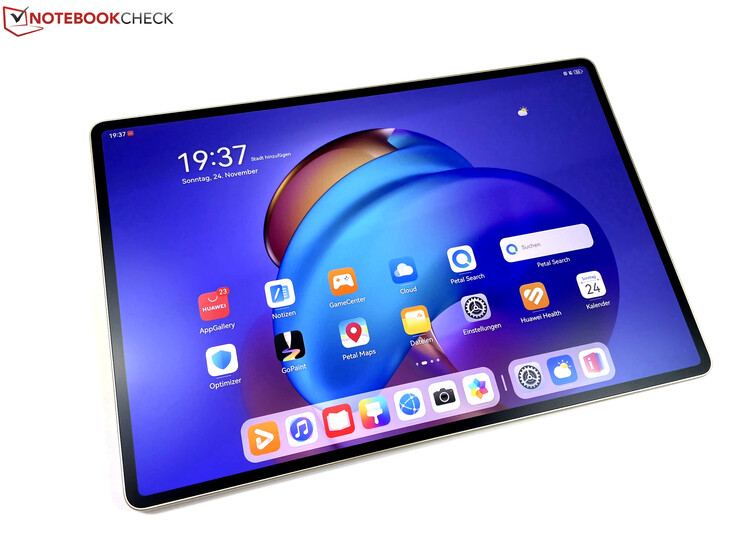




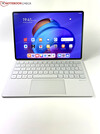








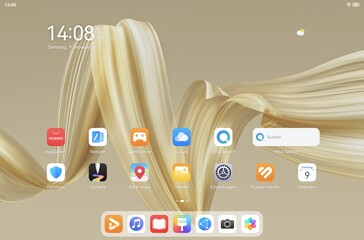
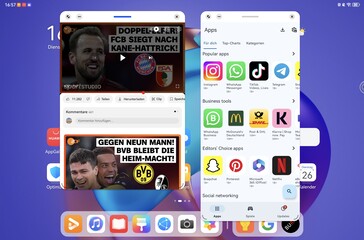
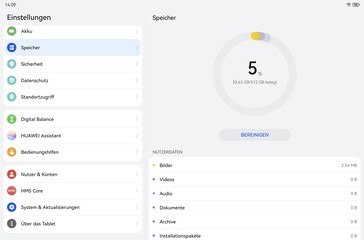
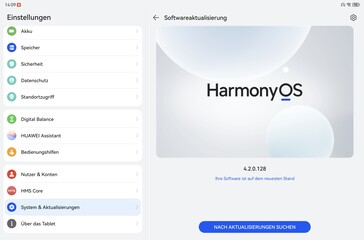
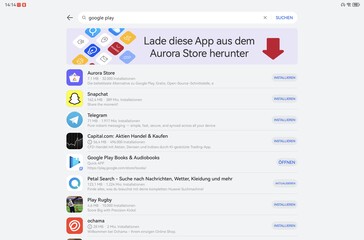
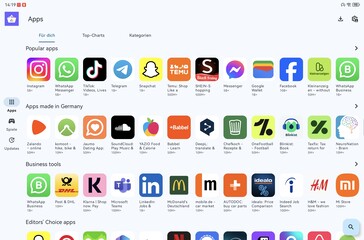
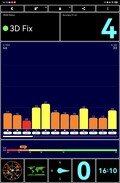
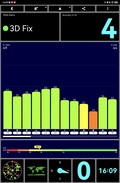
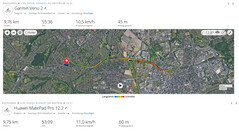

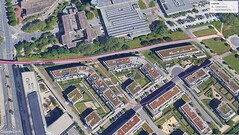








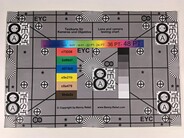



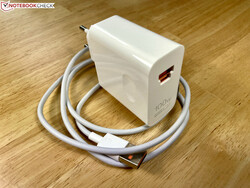
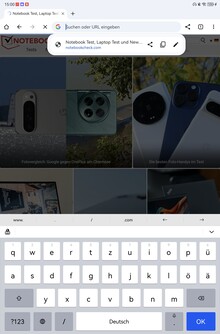
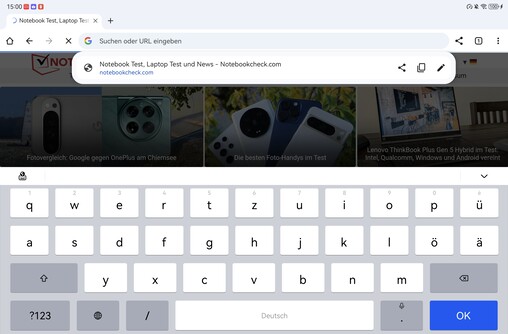
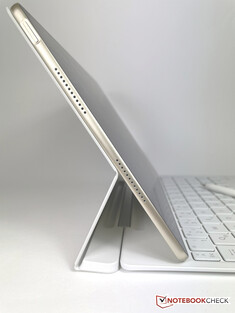
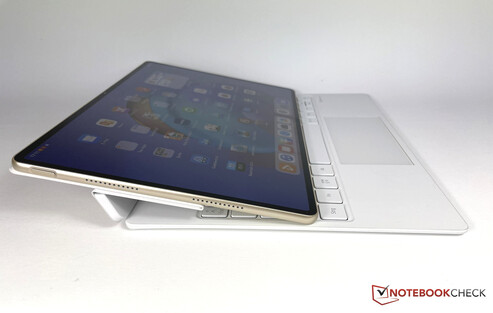
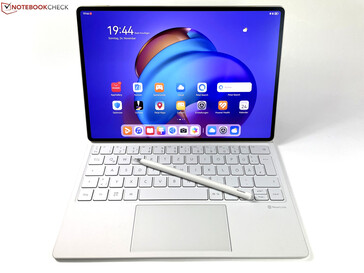

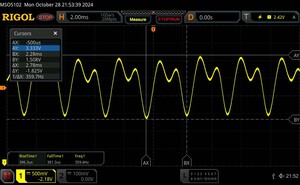
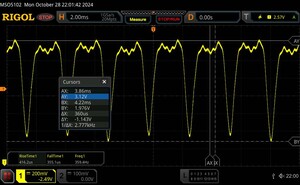







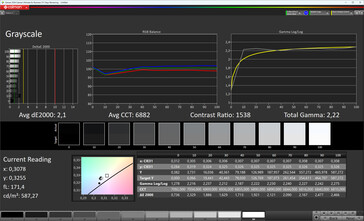
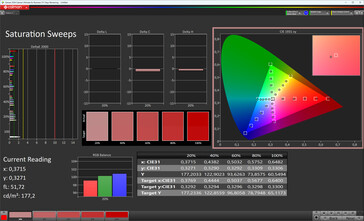
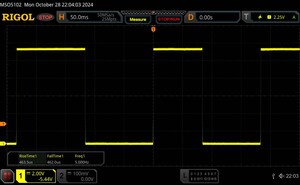
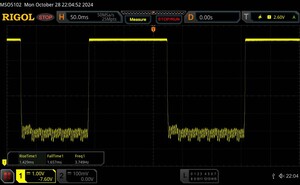
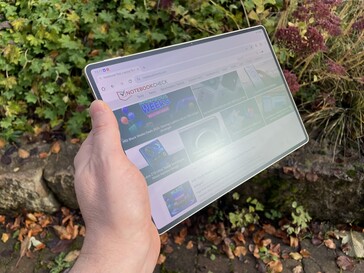




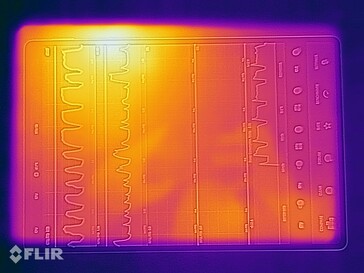
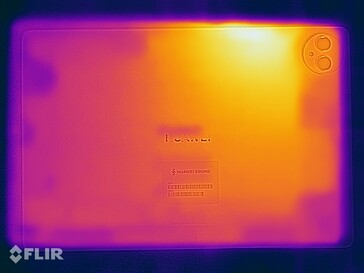
 Total Sustainability Score:
Total Sustainability Score: 
